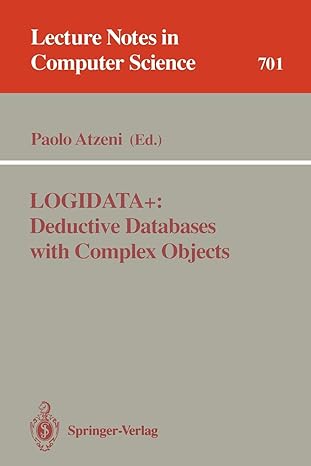Question
9. Describe the processor task specialization for each of following IBM processor-types using the following table System z Processors Processor Type Designed (Optimized) for which
9. Describe the processor task specialization for each of following IBM processor-types using the following table
| System z Processors | |
| Processor Type | Designed (Optimized) for which type of Processing Task? |
| CP |
|
| ICF |
|
| IFL |
|
| zAAP |
|
| zIIP |
|
10. An IBM mainframe design is based on a two-frame (storage rack) design, which are named the A-Frame and the Z-Frame. ( See previous image.) List the mainframe hardware components that are normally installed in the A-Frame. Answer:
11. IBM processor technologies are store in a packaging unit called a "book". List the hardware components normally found in a zEnterprise book packaging unit. Answer:
12. What are the maximum number of "books" that may be installed in an IBM mainframe? Answer:
13. List the hardware components contained in a MCM Answer:
14. How many MCMs may a book contain? Answer:
15. Using the following table answer the following T/F questions concerning the package and component hierarchy of an IBM mainframe.
| Package and Component Hierarchy of an IBM Mainframe | |
| Question | Answer: True or False |
| An IBM mainframe contains books. |
|
| An IBM book contains a MCM (multiple-chip module) |
|
| An IBM processor contains a MCM (multiple-chip module) |
|
| An IBM processor contains cores. |
|
Assume that a computer was to input payroll data stored on tape and then output a payroll transaction record to a second tape device. Review the timing sequence when the CPU was required to process the input, payroll calculations and output tasks.
| Non Overlapped Processing No Channels or I/O Processors | |||||||
| Performed by | Processing Step | Time Frame 1 | Time Frame 2 | Time Frame 3 | Time Frame 4 | Time Frame 5 | Time Frame 6 |
| CPU | Read Record from Tape 1 | Record 1 |
|
| Record 2 |
|
|
| CPU | Calculate Payroll |
| Record 1 |
|
| Record 2 |
|
| CPU | Write Payroll Transaction on Tape 2 |
|
| Record 1 |
|
| Record 3 |
The CPU was required to perform all input, calculation and output processing steps. In the first time frame the CPU would read Record 1 from the Tape 1. In the second time frame the CPU will perform the payroll calculations for Record 1, and in the third time frame the CPU would output the modified Record 1 to Tape 2. Given the relative difference in performance between CPUs and Tape devices in the 1960s, the CPU would be idle 98% of the processing time waiting for the slower tape device. Non overlapped systems were I/O Bound, i.e., the CPU was underutilized.
While the previous picture seems to imply that an I/O channel is a connector, an I/O Channel is actually a specialized I/O processor designed to work with the CPU. Modern I/O architectures rarely use the terminology of a channel any more, but every network card, SCSI card, USB root hub, etc. has a specialized I/O processor that performs the same tasks introduced by IBM in the 1960s.
Now review the timing sequence when the CPU and two channels process the input, payroll calculations and output tasks.
| Overlapped Processing A CPU and 2 I/O Channels | |||||||
| Performed by | Processing Step | Time Frame 1 | Time Frame 2 | Time Frame 3 | Time Frame 4 | Time Frame 5 | Time Frame 6 |
| Channel 1 | Read Record from Tape 1 | Record 1 | Record 2 | Record 3 | Record 4 | Record 5 | Record 6 |
| CPU | Calculate Payroll |
| Record 1 | Record 2 | Record 3 | Record 4 | Record 5 |
| Channel 2 | Write Payroll Transaction on Tape 2 |
|
| Record 1 | Record 2 | Record 3 | Record 4 |
In the first time frame the Channel 1 would read Record 1 from the Tape 1. In the second time frame the Channel would read the Record 2, while the CPU will perform the payroll calculations for Record 1. In the third time frame, Channel 1 would read Record 3, the CPU will perform the payroll calculations for Record 2, and Channel would output the modified Record 1 to Tape 2. Sounds great? But, one should ask if the tape device (or any storage device) is so slow that the CPU will have to wait for the
Step by Step Solution
There are 3 Steps involved in it
Step: 1

Get Instant Access to Expert-Tailored Solutions
See step-by-step solutions with expert insights and AI powered tools for academic success
Step: 2

Step: 3

Ace Your Homework with AI
Get the answers you need in no time with our AI-driven, step-by-step assistance
Get Started


